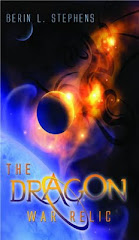V. Once, Twice,
Three Times a Comedian
Do you remember
that graph we talked about last time? If you don't, I'll wait a
second for you to go back and look at it. I'll wait right here until
you return. Finished? Okay.
In review, that
graph represents a setup along a certain train of thought and then
does a surprise, 90 degree twist at the end. Well, a simple way to utilize this graph is with the rule of three.
The rule of three
is used in many ways. It could be a group of three characters
(Harry, Ron, and Hermione; Larry, Moe, and Curly), it could be three
obstacles a character faces, or three parts of a joke. Even in our
fairy tales, a pattern of three is often used (how many bears did
Goldilocks face?). I've even encountered it in jazz improvisation,
where it's a common technique to state a musical idea two times to
set up an expectation and on the third repetition, change it to
surprise the listener. In comedy writing, it is sometimes called the
comic triple and can be used in several ways.
One
method is to make a list of three things. The first two set up the
expectation, then the third one breaks it. Here is a classic example
from Bill and Ted's Excellent Adventure:
“Beethoven's
favorite works include Mozart's Requiem,
Handel's Messiah, and
Bon Jovi's Slippery When Wet.”
We can use this
trick in our novels, too. For instance, here's a little snippet from
an upcoming Delroy story I have coming out in a few weeks on Big
World Network:
Several hours
later, after a good nap and some quality self-loathing, the door to
my makeshift prison clicked and opened. Captain Rob entered with Marv
the Malicious and Typhoid Larry close behind. “How's it going,
Del?” Rob asked with a wide smile.
“Great,” I
answered. “While I've been waiting, I developed a better way to
travel faster than light, came up with a solution for galaxy hunger,
and invented a new device to painlessly shave back hair.”
When I was in
high school, I used this technique without realizing it. My class was
asked to come up with a phrase to describe myself and draw a picture
of it so that it could be put on display in the school district
offices. This was what I came up with: I am like a pasture; smooth,
easy going, and full of B.S. For some reason, the school
administration opted to not put it on display.
Of course, the
rule of three doesn't just apply to lists. Sometimes it entails three
different people or groups responding to a situation. Take the
example from the last installment with the three presidents. Now,
think about all those obnoxious jokes you've heard over the years.
Things like, “A priest, a rabbi, and a Mormon walk into a bar…”
Sometimes the
pattern comes out during a conversation, like someone making a statement,
another person asking a question about it, and then a response. This
might be a more natural way to have the rule of three in your novels.
Here's an example:
“My uncle ran
for Senate last year.”
“Really? What
does he do now?”
“Nothing. He
got elected.”
These types of
conversations often happen in real life. For instance, one time I
posted on facebook, “The reason why I give the dog treats all the
time is because she at least acts excited when I walk into the room.”
My daughter responded, “Well, maybe we'd get more excited, too, if
you gave us treats.” I replied, “Okay, but I didn't think you
liked Milkbones.”
Now, is this a
hard and fast rule without variation? Of course not. But often, only
one segment to set up the twist isn't enough, and more than two can
make it feel too long. Use your common sense, but most of the time,
three is enough.
Next week, I'll
sock it to you.

No comments:
Post a Comment